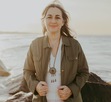Janisse Ray's Blog
November 19, 2025
Mystery of the Missing Mail
Your source for essays about being human in a wild world and wild in a human world. Thank you for being here.
THE FIRST DAY NO mail arrived we didn’t even notice. The second day with no mail didn’t register either. At evening the third day, I asked Raven, my husband, “Did you get the mail?”
“I checked it,” he replied, serving up mashed potatoes. “No mail.”
Raven and I live on a rural route, thirteen miles from a small village in southern Georgia. Until recently we had to walk a mile—out to a paved road—to check the mailbox, but our latest postmistress, a woman eager to please, allowed us to move the box to our own driveway. (That was the historic location of the box, for 100 years, in fact.)
Now from a bank of kitchen windows we can see a white mail van turn around in our drive, pause at the box, then pull away.
Except we weren’t seeing the van.
Probably we would have chalked up no mail to people writing fewer letters and using more auto-pay. The specter of the pandemic—when a simple letter from Georgia to Florida was taking a month to arrive—still hangs over us.
Usually, however, we get a letter or two a day. We get packages. And at this particular juncture Raven was expecting mail, specifically letters with checks inside them.
 Oil painting by Raven Waters, “Buckeyes.”
Oil painting by Raven Waters, “Buckeyes.” When we first moved to Red Earth Farm, forty-six beautiful acres surrounding a farmhouse built in 1850, our letter carrier was an affable guy named Carl who would drive up to the door and toot his horn. Then he would get out and carefully place a package at our front door. He was friendly with the dogs.
But with the pressure for the U.S. Postal Service to go private—or more private—two routes in our region were drafted for privatization, a trial. Both routes originate in our post office in Reidsville, Georgia. One circuit runs west on 280, toward Vidalia. The other heads west on Highway 147, toward the state prison, the Altamaha River, and our house.
From the post office in Reidsville to the county line is at least twenty miles.
*
Country people like dependability. Probably we all do. If the mail is supposed to arrive at 11, we like for it to arrive. After privatization, dependability was gone. We’d meet one letter carrier, and a few days later someone else would be driving the van.
“Are you the substitute?” I’d ask.
“No, I’m the new carrier,” the mom in sweatpants or the young man with dreads would say.
Three days later, a young woman with counterfeit eyelashes and artificial fingernails would be driving.
One day a guy pulled the mail van up to our back door. He blew the horn. “Packages for you,” he said, popping out. He was slim, gray, but with plenty of energy.
“Gosh,” I said. “We have a new driver?”
“I own this route,” he said. “My last driver quit. I’m trying to find a new one.”
“They all quit,” I say. “How much do you pay them?”
The man’s eyes narrowed slightly. “We pay them $18/hour,” he said. “Plus we provide a vehicle. People just don’t want to work.” His eyes slid sideways.
“Are you from Reidsville?” I asked.
“I live in Daytona Beach, Florida,” he said.
What the man didn’t say, I would later learn, is that the route is labeled a four-hour route. For those four hours, a letter carrier is paid $18/hour. However, if the route takes longer, the carrier doesn’t get paid for the extra time. The carrier also must purchase her own gasoline, and at the end of the month she is reimbursed for gas.
The postmaster is the person who told me this. By then the easygoing woman had transferred, and my pal Michael, whose side hustle is gigantic blow-up bouncy houses for kid parties, was the interim postmaster.
“Four hours?” I said. “How could anyone run that route in four hours?” Round-trip at speed limit would take an hour, then add a stop at every house along the way. I jiggled my head, back and forth. “Not possible.”
Michael handed me my receipt. “All I know is they’re paid for four hours,” he said.
“No wonder they quit.”
One day a middle-aged guy drove up and handed Raven mail through the window. He was the new owner, he said. From Alabama. He had purchased the route and would be delivering the mail until he found a carrier.
One day I looked out and saw the mail van pass. A few minutes later it sped back. It passed my box and kept going. Obviously the new carrier didn’t know the route. Or was lost.
*
When a week passed with no mail, we knew something was wrong. We waited two weeks and went to town. To find the post office open, operating dependably, normally, folks shuffling in to check boxes and buy stamps, was a relief. When you live isolated in the rural, sometimes when your service stops working you think the entire country has shut down. You just haven’t heard about it.
Michael is a very big guy, thirtyish. “We’re not getting our mail,” I said.
“There’s nothing I can do about it,” he said. “That’s a contract route.”
“But you’re the postmaster,” I said.
“Sorry,” he said.
I felt like grinding my molars together. I had to relax my jaw.
“Will you look in the back for our mail? We’re missing checks.” Raven was teaching a painting workshop in an old church we’ve been restoring, and some of the participants had mailed him checks. None had arrived.
Michael left the counter. Soon he returned. “We have nothing back there for y’all,” he said.
“Something’s happening with our mail.”
“I’m getting other complaints,” he said. “Except there’s nothing I can do.”
He told me that one letter carrier pulled up as close to a house as she could and threw a package from her van window onto the porch. Another left a package balanced on top of a mailbox. One dropped boxes in the middle of a person’s lawn. One person’s mail was rubber-banded to the mailbox door, which had been left open.
*
Someone reported a letter carrier parked for 30 minutes on the side of the road on our route.
Michael got in his personal truck and drove to the spot. He searched up and down the roadsides. You know what he was looking for.
Raven had his painting students check their banks—had the checks been cashed?
No, the checks had not cleared.
*
“I sent you some bulbs,” my friend S. wrote. “Did they arrive?”
“They haven’t,” I said.
“Oh, dang,” she said. “They were pink hurricane lilies. And very pretty.”
“Maybe the packaging will disintegrate and they will be found growing along some roadside.”
I didn’t really think the mail was being dumped on the road. I thought it was on a trash truck somewhere, on its way to a swale of a landfill.
*
The next time we went to the post office, Michael advised us to call the postal inspector. If you don’t know the USPS, the postal inspector is serious. That’s like calling the FBI.
Here I want to say that Raven retired from thirty years as a letter carrier and shop steward. You would never catch him saying a bad word against the post office or its workers.
When he was working, city carriers were given thirty days to learn a new route, before held to “making standards.” They were trained. They knew the rules about mail fraud being a federal crime.
But I know for a fact, the contract carriers on our route are not being trained. They are sometimes given one day to learn a route. They may not know what is legal and what is not.
“Our mail is in a landfill somewhere,” I said. But it wasn’t, as you’ll see.
*
After a month passed, late one evening the mail van pulled up and stopped at our mailbox. “Our mail is here!” I said to Raven. He headed for the golf cart and came back with a jewelry-store flier and a life insurance offer from our credit union. “Well, this is not a month’s worth of mail,” he said.
“Our mail is in a landfill somewhere,” I said.
But it wasn’t, as you’ll see.
The next evening the mail didn’t come until after dark. That seemed dangerous, for the worker.
A few days later Raven met the carrier, a young woman in pigtails. She seemed happy to have the job. She was slow, yes, and losing money. But she felt as if she’d get the hang of it, and the route would begin to go more quickly.
But no, soon a different sized arm was tossing our mail into the box. At least the mail was arriving. I wasn’t worrying about unpaid property taxes or missing the notice that I’d won a Pulitzer. (Ha!)
*
Another month passed. One day I saw a call from my neighbor, who everybody calls Honeybun. If you met him, you’d know why, the sweetest, most lovable guy, sugar-coated. Once he used his backhoe to load a huge cedar trunk (downed in a hurricane) for me, then loaned me his truck and trailer to haul it to a sawmill. He manages a couple of hunting lodges near us. One of them was recently purchased from the estate of my neighbor, John Sanders, who died last year.
Honeybun didn’t leave a message so I didn’t return his call. I thought it was a pocket dial.
We were eating supper when he called again. “Ms. Janisse,” he said. “The mail lady stopped today and told me my mailbox was full. I asked her which box and she said the Sanders box. I told her that we didn’t get mail at that box, that I had let the post office know. ‘No, sir,’ she said. ‘It’s full.’ So I grabbed the key and went out to the road.”
I put down my taco. Cheese and lettuce were falling out of it anyway. An idea was forming quickly in my head. This box that Honeybun was talking about is located next to the place where our mailbox used to be. Honeybun kept going.
“When I got out there, the mailbox was stuffed full. I mean, full. You couldn’t get one more piece of mail in there. It had letters, boxes, packages. And all of it is addressed to you and Mr. Raven.”
“Thank heavens,” I said to Honeybun. “You know how long we have been missing that mail? A couple of months. We have been to the postmaster, we’re searched the roads. We were headed to the postal inspector.”
“Well, I have it,” he said. Then he began to apologize, in that Honeybun-way. “I am so sorry. I didn’t know they were putting mail there. I would’ve told you if I’d known.”
“No worries, Honeybun. We’re just grateful you found it.”
Honeybun had to retrieve some hunters from a tree stand, he said, but he’d deposit the mail with his wife. Raven was already lifting from the table.
“Raven is on his way,” I said.
*
The pink hurricane lily bulbs are in the ground. Checks have been deposited. Bills have been paid. Junk mail is in the recycling, except for the plastic pieces, which are in the trash.
Someone has handwritten the numbers “895” really big on the side of our mailbox.
I’m hearing bad news about the postal service from a lot of people. One person told me that he doesn’t mail anything unless it’s certified. Another person didn’t receive a birthday card until three months past her birthday. Another had someone send her a check, only to have the check returned to sender.
When people can’t send things to one another, a country should pay attention.
Also, if the postal service privatizes fully, then this kind of service is what we all can look forward to.
Yesterday afternoon, sunning for a half hour on a cotton blanket in dry brown grass, Little Fawn and I watched a mail van arrive, pause at our box, then pull away. Alone in the sun with the baby, watching her crumble autumn leaves, I wondered pleasantly what might be in the box, what lifeline might connect me to the outer world, what might be headed my way.
*
For weeks this situation was a mystery in our lives: what was happening with our mail, then what had happened to our mail? Every day we revisited the mystery, pondering it from all directions.
Mystery does that to you. It leaves you unsettled, unsure, upset.
So many mysteries never get solved. Some years ago, for example, a new pup on the farm chased two sheep out of their pasture and down into the woods. The pup came home, the sheep never did. A year later a hunter called, asking if we had lost three sheep. “Two,” we said. He had found three, he said, living in the woods. Raven went to check and, sure enough, the hunter had found our sheep. The third one was a lamb the ewe had birthed out in the wilderness. How they lived for that year is a mystery.
Last week I found a set of keys on our electric box in the kitchen. The box is exposed. Someone at some point deposited a set of keys there, out of sight, and there they remain. Was it someone here for a party? How did the person drive home? Had a farm sitter left them?
Like many mysteries, that mystery remains.
But the mystery of the missing mail is solved.
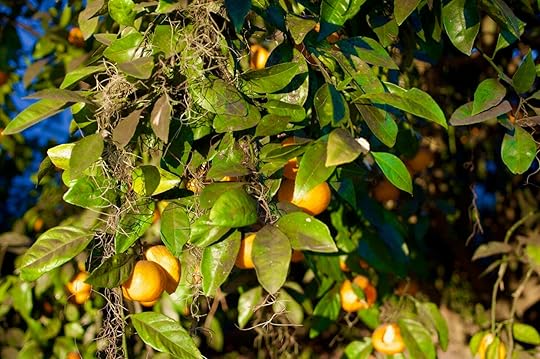 In Other News🦬 Anywhere Near Thomasville, GA?
In Other News🦬 Anywhere Near Thomasville, GA?
I will be speaking at the iconic, 30-year-old Wildlife Arts Festival this Saturday, Nov. 22. I’ll be on the Thomasville Center for the Arts, Land & Lore stage, at 1 p.m. talking about “Rooted in Wildness: Story, Land, and Belonging.” I follow my friend Shan Cammack, talking about “Young Fires: The Future of Firelighting” and am followed by David Walter Banks, photographer with a new book out from Bitter Southerner Press, Trembling Earth: A Transcendental Trip Through the Okefenokee. I hope you can join us.
🦬 Farm ReportThe pit greenhouse is rebuilt and filled with cold-intolerant plants, all in pots. The frangipani and lady palm are there, along with a few pots of pepper and basil we’re hoping to overwinter.
Chickens are on an egg-laying strike due to shorter days. Occasionally we get a single egg, which we scramble for Little Fawn.
Persimmons are done and citrus is in season. We have Satsuma mandarins, kumquats, and lemons. Citrus does so well here that every year we plant more. (If you own a spot of ground, ask for gifts of fruit trees for the holidays.)
With the cold snap, green grass is done.
All the cows (seven remaining) and horses (five, counting the obstreperous mule) are on winter hay, large rounds that one of us, usually Raven, tractors out into the field. Our farriers don’t last, probably because the job is such an arduous one, and we have a new farrier coming to trim hooves. That is not a job I want to learn. I’m excited to meet the new guy and give him a big tip.
After some sneak attacks on the Seminole pumpkins by chickens, we were able to harvest four. That’s one for Thanksgiving, one for Christmas, one for Dr. King’s birthday, and one for Valentine’s Day. (By the way, Suzy Grindrod added two really interesting pumpkin recipes to the mini-booklet we’re creating together, and I have reloaded it below.)

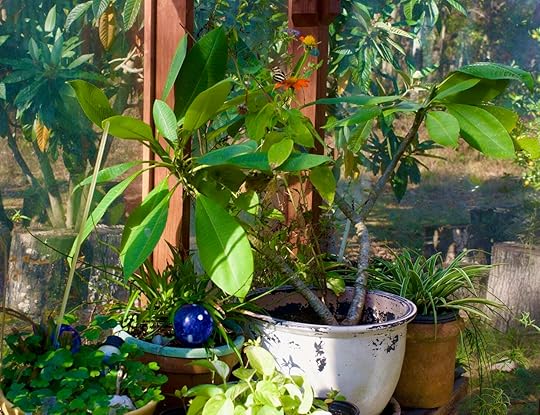 The door to the pit greenhouse was open. If you look closely, you’ll notice a zebra longwing butterfly on a torchflower. 🦬 Phenology of the Southern Coastal Plains
The door to the pit greenhouse was open. If you look closely, you’ll notice a zebra longwing butterfly on a torchflower. 🦬 Phenology of the Southern Coastal PlainsThis week I saw the first northern harrier, also known as marsh hawk. Those birds don’t get enough attention. Sometimes when I see one, it appears stark white. Mostly they are dark brown with a white rump. Always they are flowing close to the ground, hunting madly, although sometimes I see them hovering. I feel grateful that I get to spend the winter with them.
I also want to report that killdeer are back from wherever they were. The numbers are still low. I have seen flocks of fifty or sixty birds in our pastures, but recently the numbers are less than ten. Killdeer are quietly declining in my region of the Southeast. The New Hampshire Audubon website uses the words “Strongly Decreasing.” Those are startling, heart-stopping words. How can we reverse that?
We’re still in the throes of autumn foliage. One brief cold snap caused the maples to turn themselves into red lanterns and the sweetgums to jars of honey. We’ve had some wind, and half of the leaves have fallen. Enough remain to color the tree-lines. My son in Massachusetts reports that, in the Northeast, recent stiff winds whipped the beautiful multi-colored foliage from the trees.
Walking the other day, I came upon a Bidens bidens still flowering down in a gully. I counted at least ten zebra longwings on it.
 I think I count three here.🦬 Currently
I think I count three here.🦬 CurrentlyReading: I’m ashamed to admit it, but I will, for the sake of radical transparency: The 4-Hour Workweek by Timothy Ferriss. My work hours are reduced more than half by care for Little Fawn, and I thought the book might give me productivity tips. Do you want to hear more?
Listening to: “Let the Mystery Be” by Iris Dement.
Worrying about: If my healthcare (which for most of my life I did not have, but probably at this age really need) is about to double in price.
Enjoying: Bluebirds in a bare pecan tree. I watch three of them teasing each other, then lining up on one limb. More keep arriving, as if a neighborhood meeting of bluebirds has been called. Phoebes watch from nearby trees.
🦬 Plan Your Memoir Summer 2026I will not be teaching the memoir course, Write Your Own Story, until Summer 2026. There is plenty of room and no hurry to sign up—this is just a heads-up. This will be the only memoir course I offer in 2026, Wednesdays 11am-12 noon Eastern Time, June 3—Aug. 19, 2026. You can find more information on my website. Teaching is webinar style with extra sessions for small-group interaction.
🦬 The Only Magical Craft of 2026 is Fall SemesterTaking care of the baby requires that I slow down for a couple of years. I have made the decision that I will only teach one Magical Craft of Creative Nonfiction course in 2026, on Mondays from 7-9 pm Eastern US Time, Sept. 14—Nov. 2, 2026. There is plenty of time to register and plenty of room in the course. This will be taught webinar style, with extra sessions for small-group interaction, socializing, live editing, and open mic. If you want to think about it, you can find more info on my website.
🦬 Want Me to Notify You About Writing Workshops?On the homepage of my website is a link that says, Get on the List to Be Notified of Upcoming Courses. If you want to be reminded a month before a class starts, or if you want to be the first to hear about one, click that link. That sends an email to me, and I put you on a “Workshop Interest” list. The only information required is your name and email address.
🦬 “Journaling Place” Mini-Series Starts in JanuaryMy project, Nature Journaling School, is designed for you to process, document, and celebrate your life and the world around you. School happens in mini-courses, and in January a new series will begin. The theme is Journaling Place. We’ll look at nature without and nature within. School will be:
7 Sundays in a row between Jan. & Feb. 2026
hour-long sessions
each Sunday afternoon
5-6 pm Eastern US/Canada Time
starting Jan. 11, 2026 and ending Feb. 22, 2026
I will be leading the sessions, with stellar guest artists coming on to teach segments.
Clare Walker Leslie (talking about citizen science)
Madeleine Jubilee Saito (doing place comix)
Melissa DeSa (phenology wheels)
Jeanne Malmgren (guided place meditations)
Jane Pike (book of allies)
Alma Ramiro Alonzo (wildflowers)
As ever, Nature Journaling School is By Donation. Sessions are run webinar style, with plenty of interaction going on in the Chat. Think of this as an hour on Sunday evenings to focus on yourself, your place, your nature, your creativity, your greater community.
Find more information—including a list of what you get—and registration at Eventbrite. Check out the wonderful things people have said.
🦬 A Second Helping of Pumpkin RecipesCheck out our growing cookbooklet.
Seminole Pumpkin Recipes469KB ∙ PDF fileDownloadDownload🦬 As EverThank you for being here. I plan to be back next Wednesday. Until then, be well, be wild, be kind, be of good service. Be like the buffalo.
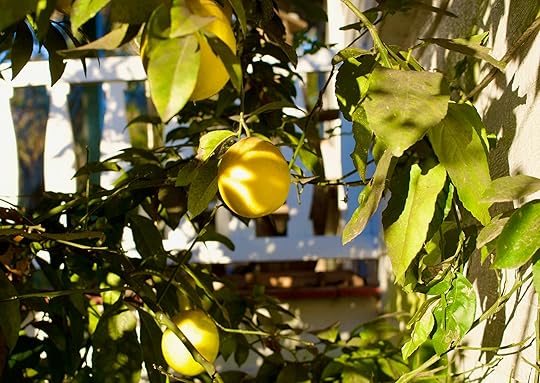
November 12, 2025
The Day I Became a Quilt
Every year the East Cobb Quilters’ Guild chooses a theme, and challenges its 300 members—quilters in metro Atlanta—to submit a block inspired by the theme.
The blocks become a show that travels the state of Georgia.
This year the theme is matriotism.
Matriotism (a word my auto-correct insists should be “patriotism”) can mean love of the Earth or a more pacifist and inclusive patriotism.
Or it can mean a celebration of women’s influence on society. This was what the Guild meant when it decided to create “an exhibit of quilts inspired by outstanding women for their positive contributions to the first 250 years of our nation’s history.”
How I Found OutThe matriotism art-quilts were unveiled on October 31 in Atlanta, and my friend Dianne Hiltman, a member of this guild, saw them. She wrote, “You were the subject of a quilt, and I wish I could claim to have made it.”
Here is the quilt:
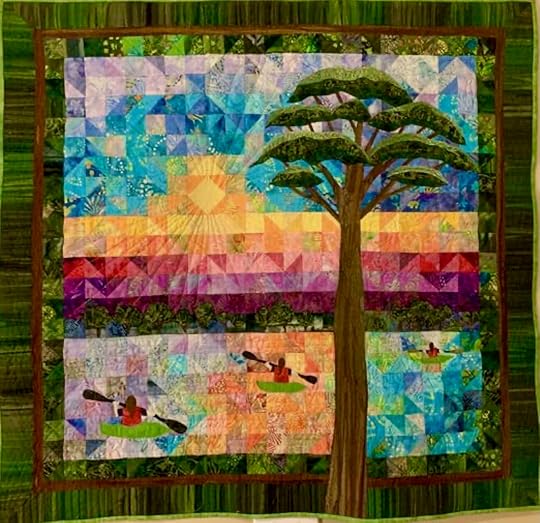 #136 by Angela RaymondAngela Raymond’s Words
#136 by Angela RaymondAngela Raymond’s WordsJanisse Ray is an environmental activist, writer and professor. She was born in Baxley, GA in 1962. Her book Ecology of a Cracker Childhood calls attention to the ecology of the vanishing longleaf pine forests that were once abundant throughout the South. As an environmental activist, she has campaigned on behalf of the Altamaha River. She has received numerous writing awards. Her professorships and seminars teach others how to spread their stories.
Inspiration: I am inspired by her love of the natural world and her dedication to its preservation. I am equally inspired by her journey: From a poor kid growing up in a junkyard to an ecologist, writer and college professor. Her journey embodies the American Dream, and her devotion to the environment exemplifies what is best in America.
I Was Undone by ItTo have an art-quilt made in honor of my work touches me deeply. The honor feels like a little bird making a nest in my throat. I feel stitched-down, colored in, joined.
Then, when I looked online at the show entries, I was stunned—the beauty! the creativity! the art! the love of nature!
I was so moved that I wanted to share a few of the art-quilts with you.
1st PlaceCongratulations to Vickie Lord, who won first place for a quilt honoring Agnes Northrup (1857–1953). Northrup designed stained glass for Tiffany Studios. Check out the quilt.
 Notice in particular the stitching of the sun.2nd Place
Notice in particular the stitching of the sun.2nd PlaceMelinda Rushing won second for her “Ode to Alice Walker.”
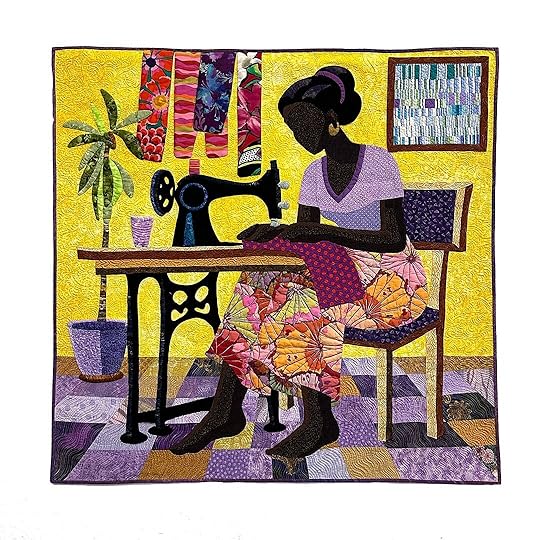 “Ode to Alice Walker” by Melinda Rushing. Don’t you love that a framed art-quilt is hanging on the wall of this room? Alice is a Georgia author.3rd Place
“Ode to Alice Walker” by Melinda Rushing. Don’t you love that a framed art-quilt is hanging on the wall of this room? Alice is a Georgia author.3rd PlaceMargaret Williams stitched a quilt featuring Rosalynn Carter, which won third place.
 “Rosalynn Carter” by Margaret Williams. Notice Rosalynn’s face, her hair, a butterfly on her heart, all those roses. I can’t wait to see this one up close.4th Place
“Rosalynn Carter” by Margaret Williams. Notice Rosalynn’s face, her hair, a butterfly on her heart, all those roses. I can’t wait to see this one up close.4th PlaceGail Scogin won fourth with a quilt inspired by Rachel Carson. About the environmentalist, Scogin wrote, “Rachel Carson’s book Silent Spring (1962) launched the modern environmental movement and led to the establishment of Earth Day in 1970. As a biologist working with the U.S. Fish and Wildlife Service, she understood the devastating impact from the widespread use of pesticides, especially DDT. With poetic language, she warned that if we did not change direction, we could one day encounter spring without birdsong.
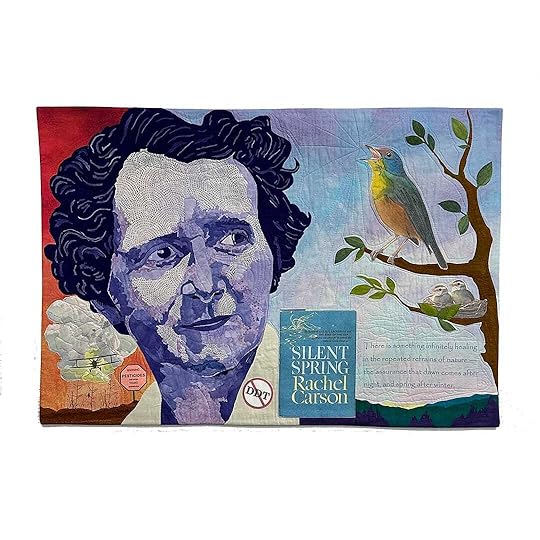 I particularly love the way Gail Scogin wove words into her textile design. And look at the songlines coming out of the warbler’s throat.Wild Card Quilt
I particularly love the way Gail Scogin wove words into her textile design. And look at the songlines coming out of the warbler’s throat.Wild Card QuiltI come from long lines of quilters. My second book, Wild Card Quilt, is a collection of linked essays that examine community—human community and wild community—and why we need both. The hearthstone of this book tells of sewing a quilt with my mother.
I put the two most beautiful squares, the ones with pieces of swallow-tailed kites, midway down the quilt so they wouldn’t be hidden by pillows. I chose four with turquoise for the corners. Then Mama and I floated above the bed with squares in our hands, like two monarchs, arranging the garden below, careful to balance the red salvia with the green coontie with the orange fireweed.
—Wild Card Quilt
I am not a quilter, although I’ve collaborated with my mother on a few.
But I admire quilters. They turn scraps and remnants into beautiful, warm, comforting covers—they make art in hidden nooks of the world—they add joy to life—they change the world quietly.
Long ago, my book-selling father stashed many boxes of Wild Card Quilt, and my mother continues to find more and pass them along to me. Recently she gave me another few cases. They’re hardback, signed and dated.
I would like to offer a copy of the book to paying subscribers for the cost of shipping. To order one, go to my website and at checkout enter a coupon code, which is behind a paywall below.
Offer is good until Nov. 19.
You Can View the Exhibit OnlineThis link from the East Cobb Quilters’ Guild will get you to the online show of Matriotism: Celebrating 250 Years of Inspirational American Women Through Quilts.
#111 was inspired by Ruth Bader Ginsburg.
#122 brings attention to Sacagawea’s contributions.
#130 celebrates Lady Bird Johnson.
#135 honors Dr. Sarah Davies, coral researcher.
#143 is an ode to Dorothea Lange, photographer.
#148 was inspired by Georgia O’Keefe.
At least four quilts were inspired by Dolly Parton.
I Hope You See it in PersonAtlanta History Center, January-April, 2026
Alpharetta Arts Association, May 2026
Georgia Celebrates Quilts®, First week June 2026
Southeastern Quilt & Textile Museum, Carrollton, Mid-June to August 2026
Jekyll Island Arts Association, September-October 2026
Booth Museum of Art, Cartersville, November 2026-January 2027
Marietta Cobb Museum of Art, April-June, 2027
Georgia Museum of Agriculture, Tifton, August-September 2027
In Other News🦬 DNA Anthology Exceeds All ExpectationsCo-editor Hilary Vidalakis and I met via Zoom this weekend. Hilary is working with an impressive assemblage of writers to prepare the essays on DNA surprises for publication. We have received excellent work, and the anthology promises to be stunning. You’ll be hearing more about this. A $1,000 award goes to the best essay in the collection, and that winner will be announced at time of publication.
🦬 This Is a Final Call for DNA EssaysIf you have an essay that
pertains to (or at least mentions) a DNA test
is already written and ready to go (or can be readied within a few days)
you’d be willing to publish under your name or a pen name
please send it to me, at the email wildfire1491 at yahoo. I’ll forward to Hilary.
🦬 Two Writer Names Missing for DNA AnthologySomehow I received two entries that do not include the author’s name. One starts with a line about “massive woods behind my house when I was a kid” and was written by a man, perhaps with the surname Young. The other is titled “The Secret Power of Secrets.” Despite numerous searches through email, I am unable to find the authors of these two essays. If one of these is you, would you be in touch?
🦬 Kickstarter Fulfillment Soon UnderwayThe Kickstarter launch for Journey in Place has ended, and I have now ordered all books. They are arriving and will start to go out to backers early next week. If you supported the launch of this (really interesting) book, you should have your copy in hand by the first of December.
🦬 I’m Recording Journey in PlaceI’m in my closet, recording the audiobook for Journey in Place, this week. I record to a Shure microphone plugged into my Mac laptop, using the app GarageBand. Each chapter gets saved in a MP3 file, and these get loaded to Amazon’s KDP. I’ve been managing about five chapters a session before my energy flags, and that takes a couple of hours, so progress is slow.
🦬 What I’m Listening ToAlec, my friend the beekeeper at Wild Light Honey, sent me a 2-minute clip of Joseph Campbell talking to Bill Moyers about the need for each of us to have a “sacred place.”
🦬 What I’m ReadingAn analysis by Phoebe Weston in The Guardian, “The nature extinction crisis is mirrored by one in our own bodies. Both have huge implications for health” says “The greater the richness of species surrounding us, the more healthy microbes make their way to our bodies.”
Note this beautiful line:
The desire to keep our own microcitizens healthy is another reason for people to demand we live more nature-rich lives, and take urgent action to preserve a thriving natural world.
I’ll be writing more about this fascinating subject later. Many thanks to Doug Denton for forwarding this article to me.
🦬 Send Your Secret on a PostcardPostcards have been arriving for my postcard project, Wild Confessions: Postcards from the Interior. By the first of December, I’ll publish anonymous secrets that arrive on postcards in Trackless Wild. Here’s what to do.
Write your secret on a postcard. No rules, no return address, no names, no identifying evidence. The secret can be a sentence, a drawing, a fragment, a confession whispered to the trees. The secrets can be big or little.
If you create your own postcard, the standard size is 4 inches x 6 inches, on paper that is cardstock or thicker. That size will require a postcard stamp, which costs $.53. However, a postcard can be any size. Those larger than 5 inches x 7 inches will require a letter stamp of $.73.
Mail your postcard to Janisse Ray, 895 Catherine T. Sanders Road, Reidsville, GA 30453. USA, if you’re in another country.
I will be sharing these in Trackless Wild, as testimony to the mysterious, untamed lives we all lead.
🦬 Beware Auto-Pay on Your Substack SubscriptionThis week I received an email from a long-time reader, supporter, and friend.
I love your work and have benefited from it!
You know that.
Substack renewed my account. I didn’t know it was on auto-renew. I contacted customer service. Nothing indicated that the auto-renew was stopped. The next advice was to contact you. I hadn’t intended to renew because of budget concerns, but it’s paid now, so I’ll certainly take advantage of it. All I’m asking is for the subscription not to renew in 2026.
Thank you!
I (Janisse) firmly believe that we need the ability to consciously decide every time we spend money. That’s our right. Anything less borders on deceit. Although Substack as a platform has been infinitely useful and good to me, I’ve often complained about what I consider its unprofessional practices, including
assertive movement of people toward becoming paying subscribers of a newsletter
activation of auto-renew without customer choice
continuing to charge higher subscription rates even when a newsletter has lowered them (as in the above customer’s situation)
I was able to go into the dashboard of my newsletter and turn off auto-renew for this customer. I sent her an email and apologized profusely.
Therefore, please take note. I need your financial support of my writing and ideas. I need investors and backers. I have a baby to care for and many world-changing projects—some philanthropic in nature—left to complete.
However, your happiness—your satisfaction with our relationship, with what I offer and what you receive—means the world to me. The energy behind the money matters. I need your emotional support first and foremost.
Therefore, please take note of your subscription settings for Trackless Wild. If you have any issues, be in touch. I offer you satisfaction or your money back. Guaranteed.
Be well, be of good service, be wild. 🦬
November 5, 2025
A Tender Adjustment to Help Her Walk
I NEED TO START at the door. A door is a threshold, point of transition, where one thing becomes another.
Across this particular threshold miracles happen, if you believe in miracles. If you don’t, then healing happens. The lame come to walk.
***
The door is solid wood, a fall wreath hanging from it. I’m carrying Little Fawn on my left hip, my right hand free to steady my mom if she wobbles.
“Ball,” the baby says to the wreath. She studies the small plastic pumpkins epoxied to plastic orange and yellow leaves.
“Pumpkin,” I say. Fifteen months old, Little Fawn can’t pronounce two-syllable words, but I keep tossing vocabulary at her.
“Ball,” she says again.
I push open the door. Once, this brick, ranch-style building was a home, and we would have entered a living room. Now, we step inside the foyer of a chiropractic office. Chairs line the walls right and left, and above the chairs hangs a gallery of family portraits. Some are of weddings.
Straight ahead is a window, place where you sign in. There, a few weeks ago, I filled out paperwork for the baby.
She’s fifteen months old and can’t walk. She doesn’t even want to walk. She’s a mad crawler, and she pulls herself up at sofas and chairs and cabinets. She stands for long periods. But when I hold her arms and take steps with her, her legs fly out wildly. The baby can’t control how her legs operate.
***
My husband, Raven, is a researcher. “Babies start walking anywhere from six months to two years,” he said to me last week. “There’s nothing to worry about.”
“I don’t know,” I replied, quietly. “Watch.” I bent over, lifted Little Fawn to her feet, and minced along with her. In three steps—her legs flying wildly in all directions, like a marionette’s—she sat down.
“Give her time,” Raven said.
October 29, 2025
How Many Bats Call This Farm Home?
DURING NATIONAL BAT WEEK, I wanted to share with you the results from eight years of bat study here at our farm in the south of Georgia, USA.
Last January I reported on seven years of data. If you missed that, here it is:

In early June 2025, the Georgia Department of Natural Resources installed an Anabat recorder and left it for five days. I didn’t get to meet the batwomen coming or going. I was tending Little Fawn. So no pictures.
I wanted to share the new numbers with you.
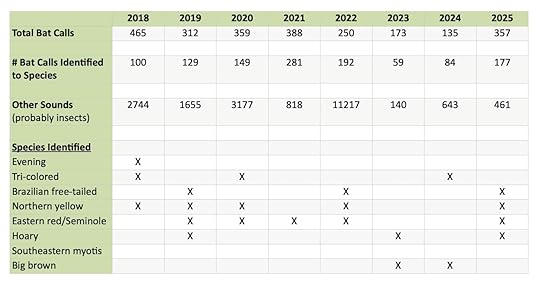
Total bat calls climbed, almost to 2021 levels. I wish this figure, 357, were a testament to large numbers of bats. Except the recorder can not identify individual bats. So, 357 bat calls could mean a few bats flying around the recorder all night, calling incessantly.
The recorder identified, with 95% confidence, at least one
Hoary Bat (Lasiurus cinereus)—Georgia Species of Special Concern
Northern Yellow Bat (Lasiurus intermedius)—Georgia Species of Special Concern
Eastern Red or Seminole Bat (Lasiurus borealis, Lasiurus seminolus)—These two can’t be differentiated by ear, only by sight. However, based on our location, DNR suspects Seminole.
Brazilian Free-Tailed Bat (Tadarida brasiliensis)
However, the Evening Bat was still absent. The endangered Tri-colored wasn’t detected.
What this year’s study assures us is that at least four bats use the farm.
Total night-noise has fallen again. I wonder what that means. I’ve asked the biologists but they can’t predict.
I’m not sure what was happening in 2022, but that was a good year for nocturnal noise-making.
What We Can Do to Help BatsLeave dead trees.
Reduce lawn-mowing and leaf-raking. Give your yard over to a native habitat, for the purpose of safe-guarding the insects that bats eat.
Reduce herbicide & pesticide use for the same reason.
Plant night-blooming native plants to attract insects.
Provide a water source, even something as simple as a trough.
Turn off night lights.
Keep cats indoors at dawn and dusk.
🦇 Happy National Bat Week! 🦇
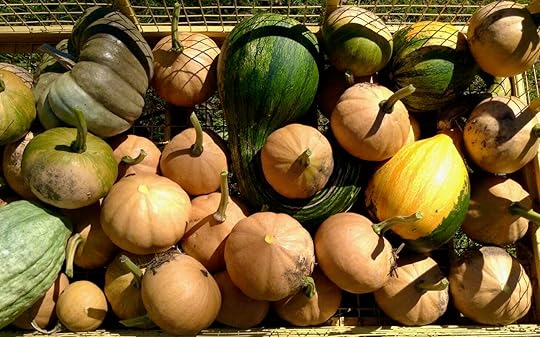 A wagon load of pumpkins, mostly Seminole, my long-time favorite.Meet Me in the Pumpkin Patch
A wagon load of pumpkins, mostly Seminole, my long-time favorite.Meet Me in the Pumpkin PatchHere during pumpkin season I wanted to share a sheet of pumpkin recipes with you. This cookbooklet includes Thai Pumpkin Soup. Although my favorite is Seminole Pumpkin, any pumpkin or winter squash may be used in these recipes.
 Thai Pumpkin SoupSeminole Pumpkin Recipes | Trackless Wild98.3KB ∙ PDF fileDownloadDownload
Thai Pumpkin SoupSeminole Pumpkin Recipes | Trackless Wild98.3KB ∙ PDF fileDownloadDownloadAnd also Stuffed Pumpkin.
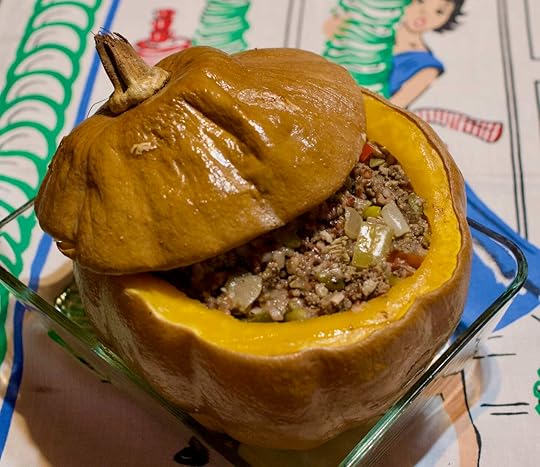 Add Yours
Add YoursIf you want to send me a favorite pumpkin recipe, I will gladly add it to our “cookbooklet” and make it available to everyone. Here’s my email.
In Other Matters🦬 Thank You for Making the Kickstarter a Thumping SuccessThank you, thank you, thank you for supporting the Journey in Place Kickstarter.
The campaign ended on Saturday night at 10:25 p.m., after running 20 days. In an eleventh-hour surge, the book launched with 371 backers pledging $18,397. 🎉🎺🧨 My secret goal was 300 backers, and we shot beyond that. Thank you so much. I am very excited and grateful.
When I looked at Kickstarter’s analytics, they show that, by far, supporters for the project come from Substack. Thank you very much for your strong-hearted and everlasting support. 🥂
Next I will send out a Backer Survey out to gather email and mailing addresses. Right after that I’ll begin sending out copies of the book. I’ve ensnared my walking group into helping.
If you signed up for one of the workshops, I’ll be in touch.
 🦬 Send Your Secret on a Postcard
🦬 Send Your Secret on a PostcardI’ve opened a small doorway called Wild Confessions: Postcards from the Interior, similar to the famous PostSecret project. I’ll be publishing anonymous secrets that arrive on postcards. Some are already arriving.
Write your secret on a postcard. No rules, no return address, no names, no identifying evidence. The secret can be a sentence, a drawing, a fragment, a confession whispered to the trees. The secrets can be big or little.
If you create your own postcard, the standard size is 4 inches x 6 inches, on paper that is cardstock or thicker. That size will require a postcard stamp, which costs $.53. However, a postcard can be any size. Those larger than 5 inches x 7 inches will require a letter stamp of $.73.
Mail your postcard to Janisse Ray, 895 Catherine T. Sanders Road, Reidsville, GA 30453. USA, if you’re in another country.
I will be sharing these in Trackless Wild, as testimony to the mysterious, untamed lives we all lead.
🦬 What I’m Listening ToI had some chuckles listening to an episode of The Art of Resistance Podcast called “Hexing the Patriarchy: The art of W.I.T.C.H., 1968+.”
“In 1968 a splinter group of radical feminists introduced a new tactic to fight for women’s rights,” wrote Amy Lee Lillard, who describes herself as an “author and podcaster making weird art as resistance.” The tool W.I.T.C.H. used was a kind of street theatre it called the zap, which combined poetry, witchcraft, and protest. The zaps were hexes.
Halloween of 1968 the women hexed Wall Street with this chant:
“Wall Street, Wall Street, mightiest wall of all street. Trick-or-treat, corporate elite, up against the Wall Street!”
I guffawed at that.
Man, I loved the Sixties. Of course, I was in first grade when W.I.T.C.H. was hexing Wall Street, but as soon as I learned about the Sixties, I was all in.
🦬 What I’m ReadingI have to be honest. I’m rereading my own new book, Journey in Place: A Field Guide to Belonging, in order to look one last time for typos and other mistakes. Typos are like stinging nettle, except without the medicine—they show up where you least expect, and you never seem to get rid of them.
🦬 Phenology: This Week in the Living LandscapeThe natural world is shuttering windows, closing up shop for winter. Leaves are dropping. Dormancy cometh. Fall wildflowers that got pollinated are busy in their little calyx workshops, making seeds and starting to market them. Seedheads of grasses, sedges, and forms are visible. Overhead, at night, birds migrate south. More hawks and kestrels have returned. Killdeer are back, although their numbers seem to have decreased even more. Light wanes, days and nights are cooler, and a frost may settle on us later this week.
🦬 If I Owe You AnythingI want to start 2026 with a clean slate. This request came in this week from a person who purchased an audiobook at my website:
Hi, Janisse! Love how you’re tying up all loose ends by year’s end. It’s inspiring. Thanks for this opportunity to retrieve your audiobook. Bookfunnel hasn’t sent me anything yet to download it, so if you could make that happen I’d be so grateful. Thanks and enjoy the upcoming holiday season! C—
C said she hadn’t wanted to bother me. Please believe me when I say that serving you and making good on all promises is extremely important to me. Don’t stay silent if I’ve forgotten something.
Be well, be of good service, be wild. 🦬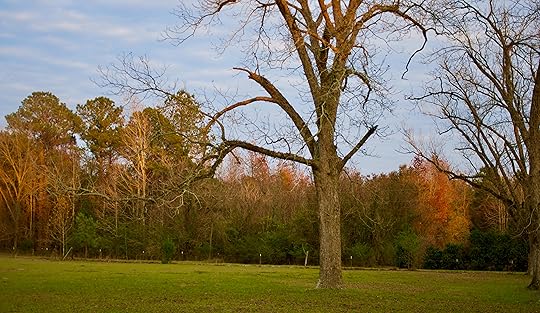
May the people of Jamaica recover swiftly from the ravages of Hurricane Melissa.
October 25, 2025
Thank You, in These Final Hours
I WANTED TO drop in for a minute on your Saturday afternoon to tell you that, because of you, the Journey in Place Kickstarter has exceeded all expectations. I was hoping for 300 backers, and we are way beyond that.
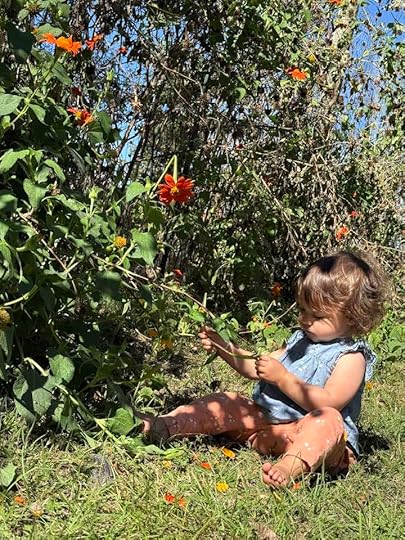
The project started here, with you amazing people, and it ends here. I’m just so thankful to have this community. You help me turn my wild dreams into reality.
When I looked at Kickstarter’s analytics earlier today, they show that, by far, supporters for the project have come from Substack. Thank you so much for your strong-hearted and everlasting support.
The Kickstarter ends at 10:25 pm tonight, 10/25/25. We have five more hours to see where this goes, but I wanted to drop in and thank you with all my heart.
I’m so happy to reach the finish line. Releasing books on Kickstarter has been a strange and sometimes soul-crushing thing to navigate, a different way of doing books, new to me. We’re all trying to navigate these strange, fast-changing, head-spinning times.
If you want to follow the campaign these last hours, a link is below.
Meanwhile, I hope you’re having a golden fall day where you are, enjoying the monarch migration and roadside asters and wild apple trees—all the good things.
Let’s enjoy our lives.
With love and gigantic appreciation,
Janisse
Kickstarter for JOURNEY IN PLACE
 From Kickstarter’s analytics. The most support is coming from Substack.
From Kickstarter’s analytics. The most support is coming from Substack.
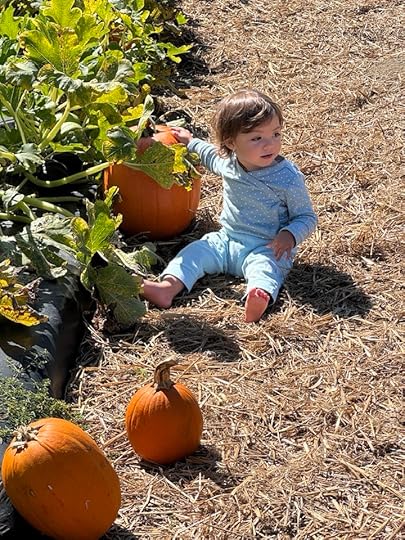 Little Fawn in the pumpkin patch.
Little Fawn in the pumpkin patch.
 Little Fawn in the torch flowers.
Little Fawn in the torch flowers.P.S.
And if you miss the Kickstarter, no worries. By the end of November the book should be available in the marketplace.
October 22, 2025
10 Products You May Not Know About
The way capitalism works, smaller brands can get lost. Their marketing doesn’t reach you. They can’t afford massive advertising spots. They don’t get stocked in chain stores. They get stocked but shuffled to ankle-level shelving.
We are dependent on the capitalist economic system for at least some of our goods. Why not avoid corporate capitalism? Why not support useful products with our money?
I have chosen ten products that I want you to know about. I picked these because they’ve made a real difference in my life, and because they’re not everyday products. You won’t see advertisements for them during the Super Bowl.
Please note that I receive nothing from telling you about these. The makers have no idea I’m even writing this column. Some of these are excellent makers that I know personally or have patronized, and many happen to be near me in Georgia.
Good ideas get passed around by word of mouth, so consider this my word to you: here are some useful products to know about.
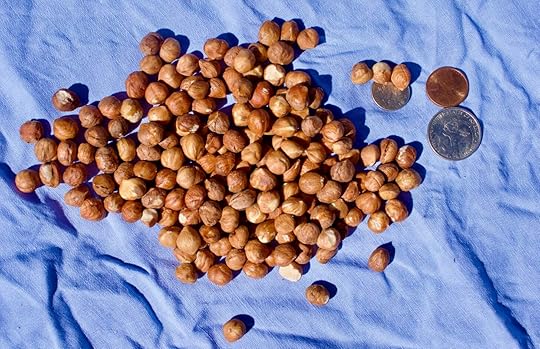 American hazelnuts. See how many fit on a dime. At least three.1. Nuts in the MidwestHazlenuts from Hazel Heart Farms
American hazelnuts. See how many fit on a dime. At least three.1. Nuts in the MidwestHazlenuts from Hazel Heart FarmsViroqua, Wisconsin
Hazle Heart Farms is a collective of Midwest farmers who are growing this native nut to restore soil, clean water, and bring wildness to Midwestern farms. Here’s what they say on their website:
Hazelnuts have grown wild across the Midwest for over 10,000 years. By planting them on our farms, we’re tapping into nature to bring this rich, local protein to our plates. Most people have never eaten a nut grown in Midwest soil. We’re here to change that. Thank you for joining us on this delicious mission!
I am in love with the tiny Midwest hazelnuts. I hope you order a bag of nuts from them.
2. An Alternative to ToothpasteOne Drop Only from Rupam’s HerbalsSan Rafael, California
During the pandemic I listened regularly to the podcast Medicine Stories, whose tagline is “Remembering what it is to be human upon the earth.” Host Amber Magnolia Hill puts out fewer episodes these days, but back then, the shows arrived weekly. The target audience seemed to be millennial women with an alternative bent, and I fit part of that category.
One week Amber interviewed Rupam Henry of Rupam’s Herbals—Healing the Bones: Holistic Dental Health, Lineage, and Being Soft with Yourself. I already knew that our teeth can repair themselves, meaning remineralize, but I’d never been able to accomplish that. For me, when a tooth began to deteriorate, such as such early signs of a cavity, the degradation would continue.
I listened avidly to Rupam’s experience with holistic dentistry. She said that most toothpastes use glycerin, which prevents remineralization.
Do not brush with anything that has vegetable glycerin because vegetable glycerin sticks on your teeth. The consistency is like plaque…it’s sticky, it’s sweet, and it actually kind of just becomes more plaque.
—Rupam Henry
In that podcast I learned about a product Rupam created. It’s called One Drop Only, dental soap and tooth elixir. It comes in a glass jar with a press top.
I quit using regular toothpaste and I only use One Drop Only. I wish I had found this product when I was two years old. I am sure that I would not have as many root canals as I have.
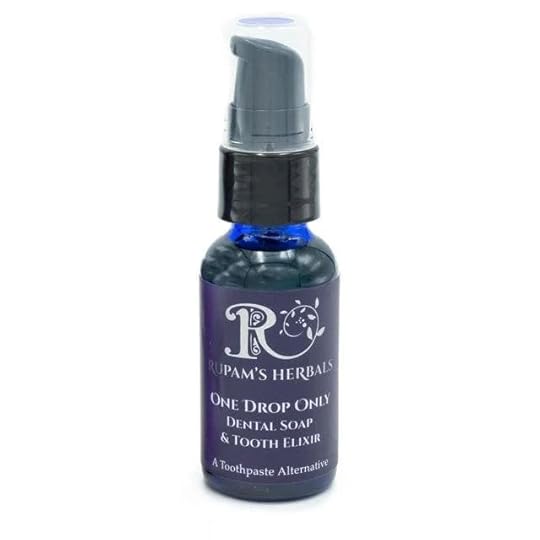 3.If You Need ItCBD Oil from Primal Botanical
3.If You Need ItCBD Oil from Primal BotanicalSt. Johnsbury, Vermont
During the pandemic I felt very anxious about the dangers around us. We lost many people in my extended family and in my community, and others were permanently crippled or otherwise harmed by Covid-19. Although I was drug-tested for my work with our local archives, I started taking CBD oil. I obtained it from Primal Botanical.
These are full-spectrum, small-batch products handcrafted in Vermont by nurse and herbalist Annika McCann. She uses organically grown herb and infuses it in organic coconut oil. You’re getting a superior product here.
Annika herself sells at farmers markets in her area. I love supporting a small, woman-owned business with a huge ethic and a love for the Earth.
4.Where You Buy Your Coffee MattersMad Poet Coffee from Cafe CampesinoAmericus, Georgia
I order my coffee from Cafe Campesino—organic, bird-friendly, and 100% fair trade. It was connected with Koininia, a Christian communal farm located near Jimmy Carter’s hometown of Plains and the birthplace of Habitat for Humanity.
From the Cafe Campesino website:
We import all of our coffee directly from small landholder coffee farmer cooperatives via a unique, principle-driven supply chain called Cooperative Coffees that we co-founded in 1998. Cooperative Coffees is the only fair trade green bean roaster cooperative of its kind in North America, employing common-sense, respectful, mutually beneficial terms of trade for sourcing organic green coffee fairly, directly, and transparently from farming communities who we have known for years.
I usually order the Mad Poet Blend, which is a Viennese roast.
Speaking of Koininia, check out their store here, a fine place to get organic pecans and nut candies.
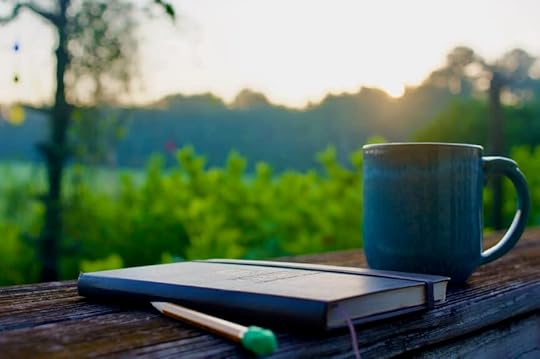 5.The Best in the U.S., Maybe the WorldExtra Virgin Olive Oil from Terra Dolce
5.The Best in the U.S., Maybe the WorldExtra Virgin Olive Oil from Terra DolceLyons, Georgia
My old friend Tommie Williams started an olive orchard near me, and I found out quickly that Georgia olive oil is the best I’ve tasted. I’m in love with it. Tommie’s place is Terra Dolce Farms.
Another nearby farm is Woodpecker Trail Olive Farms. They have a sale right now.
6.Speaking of OilsPecan Oil from Oliver Farms Artisan OilsPitts, Georgia
I met Clay Oliver back in 2008 when he started this amazing culinary oil company. He makes delectable, cold-pressed, non-GMO, unrefined oil. They are truly fine. I highly recommend the Pecan Oil, but what you’ll want to do is start with one of their beautiful Made in the South Gift Sets, which includes Pecan, Green Peanut, and Sunflower Oils.
Also, secret tip: Check out their Okra Seed Oil. Beat me to it.
7.If You Make Jams & JelliesPomona’s Universal PectinOakhurst, California
All you’ll find for jam-making in most stores will be the old Sure-jell, and it requires lots of sugar. What if you want to make and eat no sugar or low-sugar, fruit-forward jams?
About fifteen years ago I found Pomona’s Universal Pectin, which permanently changed my jelly life.
PURE, HIGH-QUALITY PECTIN FOR YOUR JAMMING NEEDS
Pomona’s Universal Pectin contains 100% pure citrus pectin, which is vegan, gluten free, and GMO free. It leaves out additives, preservatives, sugar, dextrose, and other fillers, as well as corn or apple by-products. The citrus pectin works in tandem with calcium—don’t ask me the chemistry of it—but please know that it. works. beautifully. With it you can produce incredibly tasty and healthy jams and jellies.
Why more people don’t know about this baffles me.
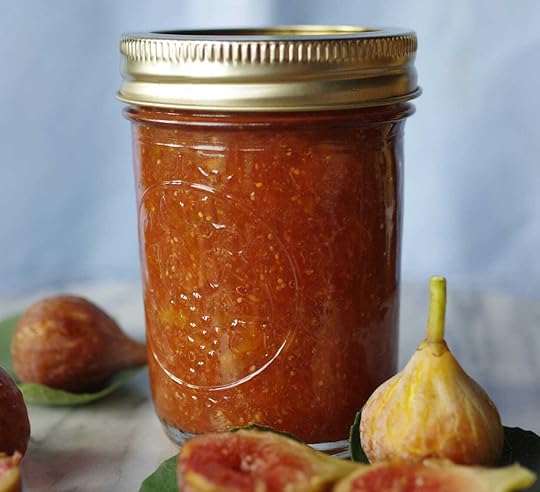 Low-Sugar Fig Jam8.After a 95-Year BanAbsinthe Supérieure from Mt. Reliance Cider & Distillery
Low-Sugar Fig Jam8.After a 95-Year BanAbsinthe Supérieure from Mt. Reliance Cider & DistilleryMiddleburg, Virginia
Absinthe may not be your thing. It needs a special person to love it. Hemingway was one of its people.
“Got tight on absinthe last night. Did knife tricks.”
—Ernest Hemingway
I’ve been on a long quest to figure out exactly why absinthe was banned from 1912-2007 in the U.S.
A few years ago, when I was in residence at Oak Spring Garden, Bunny Mellon’s home outside DC, I found this version. Many U.S. artisanal absinthes are being distilled these days, and I only mention this one because it’s the first I came across. Here is what Mt. Reliance says about their product:
“A traditional, French-style verte absinthe created from a late 19th century French recipe. Our absinthe is distilled using whole botanicals, naturally colored, and bottled at 140 proof. We grow our own grand wormwood, roman wormwood, hyssop, and other botanicals, and import Andalusian green aniseed and French fennel doux.”
I hope you find the green fairies.
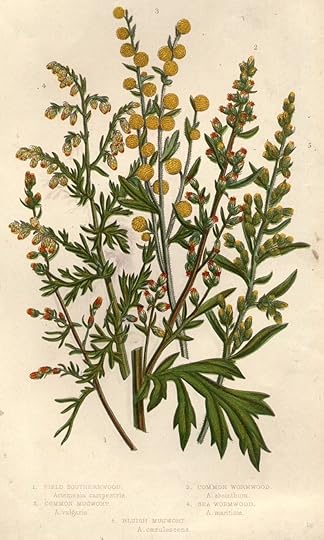 9.Quit Throwing Plastic Pens in the OceanPencils from Blackwing
9.Quit Throwing Plastic Pens in the OceanPencils from BlackwingStockton, California
So I hear, Steinbeck used them, sharpening dozens before a writing session. Capote too. Guy Clark the songwriter. Sondheim. Faye Dunaway.
Now you know where my horsepower arises. I use Blackwings. Yes, they’re more expensive than regular pencils. No, I don’t care. I skip fancy coffees to buy nice pencils. The lead is soft, the wood is real, and the eraser is rectangular. It also is replaceable, slipping easily out of the head.
Blackwing occasionally makes special editions and right now you can still get the Jerry Garcia pencil.
 10.Wash Your Face With OilBest Skin Ever by Living Libations
10.Wash Your Face With OilBest Skin Ever by Living LibationsI was visiting the writer Holly Haworth at her home when I noticed on her vanity a lovely bottle of bright-green oil called “Best Skin Ever.” I asked her about it and since that day, many years ago, I have never used soap on my face.
I pour hot water over a cloth, squirt on a few drops of Best Skin Ever, let the cloth cool down half a second, then wipe my face. My favorite is the Frankincense.
This product was developed by Nadine Artemis, described as a “beauty philosopher, aromacologist, and botanical muse.” She is the author of Renegade Beauty.
I was smitten when I found a page of Adulations, where even Alanis Morisette raves about Living Libations.
I also began to make my own face oil by steeping calendula petals and other herbs in really great oil.
 Comments
CommentsI’d love to hear about small-batch, high-ethics, Earth-loving products that you know about and use. Tell me why you love whatever it is. Please. Shoot me a line. I’d like to learn about your favorite specialty products and hopefully I can highlight favorites in a future issue of Trackless Wild.
In Personal & Other News🦬 My Kickstarter for JOURNEY IN PLACE Ends on Saturday, October 25
THREE days left to get one of the first copies Journey in Place: A Field Guide to Belonging. If you haven’t checked out what I’m offering, now’s the time.
I am in the closet an hour a day, recording the audiobook. Everything else is finished, so books will be mailed out by the first of November.
Have you see the latest pledge amount & number of supporters? Thank you all.
🦬 Free “How To Kickstart” WorkshopI am offering a free workshop on launching a product via Kickstarter. I will show you how I set up and run a campaign, what I’ve learned so far about what works and what doesn’t. Get on the list by sending me an email. No date is set, probably early 2026.
🦬 What I’m ReadingStone Desert by Craig Childs
This book went out of print, and with some help from bookstore friends, Craig Childs brought it back into circulation. My friend, the nature writer Susan Cerulean, brought me a copy when she visited last week. One interesting thing is that this is a tête-bêche (head to tail) book. Starting at the front you can read the book, typewritten. If you turn the book over and start from the back, you see Craig’s personal journals, where the book originated.
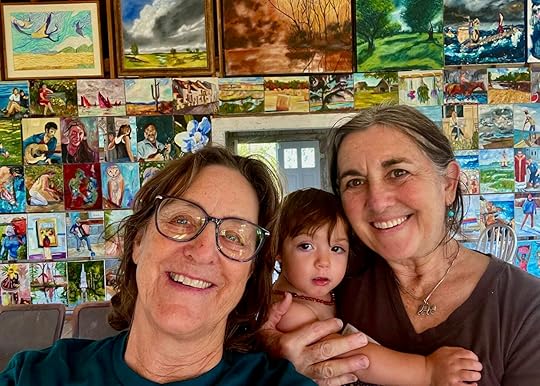 Susan Cerulean, Forest, and me.🦬 If I Owe You Anything
Susan Cerulean, Forest, and me.🦬 If I Owe You AnythingI want to start 2026 with a clean slate. If I owe you anything, please let me know asap. I ran this notice last week and received two very kind emails.
1.
Hi Janisse, you sent a newsletter out recently asking for a heads up if we were waiting for something from you. Here’s mine. I believe you haven’t commented yet on two essays I submitted for your review earlier in the year. Thank you again. I am really grateful for what I learned and what I continue to learn from that course! E—
2.
Hello Lovely, just a gentle reminder that I have not yet received my place book from the course. J—
I posted those two messages to let you know that I truly am committed to tying up loose ends. If something that I promised and owe you is not complete, please let me know.
🦬 I Hope You Send in a Wild Confessions PostcardOver at the newsletter for my nature work, Trackless Wild, I’m opening a small doorway called Wild Confessions: Postcards from the Interior—a place for truths we carry in silence, similar to the famous PostSecret project.
Write your secret on a postcard. No rules, no return address, no names, no identifying evidence. The secret can be a sentence, a drawing, a fragment, a confession whispered to the trees. The secrets can be tiny, minor, insignificant. If it concerns writing and nature, great.
Mail your postcard to me, and let it travel through wind and weather until it lands in my hands. I will be sharing these in Trackless Wild, as testimony to the mysterious, untamed lives we all lead. The wilderness in us wants to speak. In this case, the audience will not be one person.
Send to:
Janisse Ray
895 Catherine T. Sanders Road
Reidsville, GA 30453
If you create your own postcard, the standard size is 4 inches x 6 inches, on paper that is cardstock or thicker. That size will require a postcard stamp, which costs $.53. However, a postcard can be any size. Those larger than 5 inches x 7 inches will require a letter stamp of $.73.
Deadline for the first installment of Wild Confessions is December 1.
Please know that I won’t publish fewer than ten, so you have an even greater chance of anonymity.
🦬 Beloit College in Wisconsin Is Looking for a Creative Nonfiction ProfessorMy friend Chris Fink alerted me that Beloit is hiring in creative writing and journalism. The job ad is here. The search is open until Oct 30. The ideal fit would be a creative nonfiction writer with journalism experience and the ability to teach “Intro to Journalism.”
Be well, be of good service, be wild. 🦬October 15, 2025
Some Things We Can't Tell Anyone
Some things we can’t tell anyone, and yet they ache to be told.
I’m opening a small doorway called Wild Confessions—a place for truths we carry in silence, similar to the famous PostSecret project.
Write your secret on a postcard. No rules, no return address, no names, no identifying evidence. The secret can be a sentence, a drawing, a fragment, a confession whispered to the trees.
If it concerns nature, wildness, biota, Earth, or sustainability, great.
Mail your postcard to me, and let it travel through wind and weather until it lands in my hands.
I will be sharing these in Trackless Wild, as testimony to the mysterious, untamed lives we all lead. The wilderness in us wants to speak.
Send to:
Janisse Ray
895 Catherine T. Sanders Road
Reidsville, GA 30453
If you create your own postcard, the standard size is 4 inches x 6 inches, on paper that is cardstock or thicker. That size will require a postcard stamp, which costs $.53. However, a postcard can be any size. Those larger than 5 inches x 7 inches will require a letter stamp of $.73.
Deadline for the first installment of Wild Confessions is December 1.
A Longer Essay, With a Few PhotosWhy I’m Obsessed With Place and Why You Should Be TooMeeting a new person, do you wonder where they’re from?
Do you think about where you live, how you got there, and if it’s the right place for you? Do you ponder the idea of home?
Most of us do. We do these things because we humans are obsessed by place and ideas of place.

I was born in an odd, matchless place. Not a suburb. Nor a town. Not inner-city. No farm or ranch or even the country.
It was a junkyard, in the south of Georgia.
Here’s a photo of me. I’m the child next to my dad.

As I grew up, I could look around and see that other kids weren’t growing up the way I was. I read tons of books, and the children in books weren’t either.
So I knew pretty early on that
place was a thing
it meant something
I was different because the place I was from was different
Different?
For one thing, a strange plant grew in the junkyard. It was called pitcher plant, and it ate insects.
After I found those, everything became more bizarre, more unique.
It took some years, but I finally learned to love my place, with all its peculiarities.
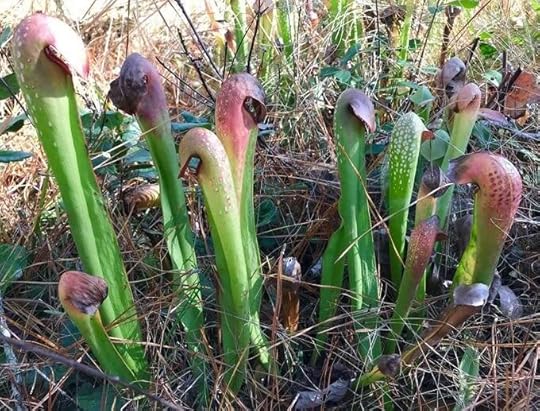
I thought you’d like one more photo of me gardening as a young girl in the junkyard. Of course I got attached to this place. My knees were in its dirt.
I grew up and became a nature writer, a person who writes books about nature and thinks a lot about place.

A few years ago I was speaking at Berry College in Georgia when a young person in the front row raised her hand and asked a question I had never been asked.
How do you learn to be in place?
The student sensed she was missing something from her life. She wondered what a place-based life would look like.
Strange, isn’t it? I told her. We are told daily that place doesn’t matter. Our culture focuses on built environment and on technology. Places are destroyed. They are homogenized.
Yet, we are made of place. We evolved to live within landscapes, to deeply know the Earth’s cycles, to flourish within those cycles. Placelessness shows up in us as a kind of homelessness, a soul wound.
I’ve never been asked what you just asked me. I don’t really know the answer to your question, but I wish I did.

So I created a book about placekeeping, tracing a year in a place, with tiny lessons that a busy person could accomplish in 15 minutes without becoming overwhelmed. It seeks to answer one question, How to be in place?
How to love our place. How to become intimate with it. How to witness it and be witnessed by it. How to strengthen the fabric of life around you. How to find a support network that is the earth itself.
Cover Reveal! Cover designed by Flournoy Holmes
Cover designed by Flournoy HolmesThis is a manual for
getting to know
falling in love with
living well in place
I am right now launching it via Kickstarter. Why is a whole other story. I don’t treat Kickstarter as a crowdfunder but as a way to help a book find people who want it and need it.
The Kickstarter will be live until 10:25 pm on Oct. 25, 2025.
However, if you don’t want to bother with Kickstarter, no worries. In 6-8 weeks the book will be available on my website, and then in 8-12 weeks available on Amazon, Barnes & Noble, and other platforms. Getting this from your favorite bookstore could take a few months.
I lifted much of the writing in this post, by the way, from my Kickstarter’s story. So if you go there, it will feel familiar to you.
More About the BookJourney in Place contains 52 explorations consisting of
• a tiny essay on some aspect of place
• an on-the-ground exercise
• a writing prompt or two
• a reading list
• an occasional offering of a photograph or piece of writing
• an occasional recipe involving a foraged food or medicine
• handouts and worksheets.
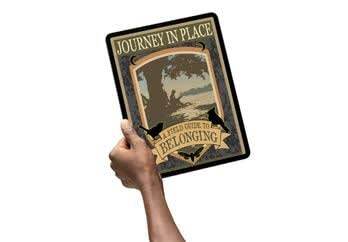

At the end of the year you could have a
• body of knowledge about your place
• deeper understanding of it
• knowledge of secret parts of it that very few other people (I dare say none) know
• greater love for place
• body of writing about it and about your relationship with it
• greater feeling of groundedness
• willingness to pay attention, to listen, to see details
• more acquaintances, more friends
This is a lot. It suggests that we could be very different people in a year. And why not?
Why not work to understand where we live and why it resonates so deeply?
Why not work to be human in a landscape?
Why not bring your global environmental ethic down to the specific and personal?

Most of my personal sensibilities are directed to a landscape that includes nature. However, most people don’t live rural lifestyles.
Therefore, I make a directed effort to think about place differently in this book, as the environment around us, including the built environment of an urban landscape.

Jan. 1 is a perfect time.
Thank YouThank you for sticking with me this far. “Place” is a subject that enflames me, perhaps is my life’s work. I want you to know about this book and about the Kickstarter campaign.
Again, if Kickstarter is not an app you want to sign up for, no worries. Plenty of options for getting a book will be available later.
If you want to check out how a Kickstarter works, then follow the link.
How to KickstartI will be teaching a small, intimate, free workshop live via Zoom on “How to Kickstart.” If you are interested in running one, let me know and I’ll get you on the invite-only list. I may be reached at my email.
Splendorous FlightI want to share with you a photo taken by my friend Sean Sexton, poet, photographer, and rancher. He lives in central Florida. Have you seen his collection, Portals? Notice in the photograph how the leaning palm has become a portal.
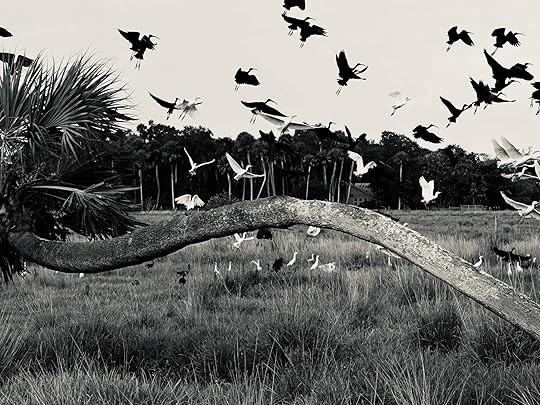 Surprising Publishing News
Surprising Publishing NewsAs a writer, I’m trying to stay atop major changes happening in the publishing industry. I was shocked to learn yesterday that another traditional press is closing its doors. I received an e-letter from Megan Mustain, provost at Trinity University, with the subject line “Sunsetting operations.”
What I’m Anticipating
After careful consideration of the strategic needs of the university, I have decided to begin a 16-month process of sunsetting the operations of Trinity University Press, which will close in December 2026.
I remain proud of the press, and especially the dedicated and talented team of people who have made it a place where authors and readers meet, and where so many beautiful ideas and stories have been brought forth to enrich our community. This pride in the high-quality work of the press, its staff, and its authors makes its closure a difficult decision.
And yet the costs of running a high-quality small press have become unsustainable in light of the additional investments that the university is making in its educational mission and the core operations that support that mission. While profit has never been our aim, the costs of production and promotion have increasingly outpaced revenues, and the university’s subsidy for press operations has been growing year over year despite diligent efforts to contain expenses.
My old friend Susan Cerulean, nature writer, arrives today to my farm for a long-anticipated visit. She has not met Little Fawn, so she is about to fall head over heels in love. Remember the post I wrote months ago, “How to Make Guests Feel at Home?” Susan appears in that post, albeit unnamed. She is the host who sets out photos of guests before they arrive. I am very excited to spend time with my old friend, and this morning I’m planning what flowers I can cut for her room.
Next WeekI’ve been processing ideas of meaning in our lives, especially my life, in this time of big changes—some of them terrifying—and I hope to have those thoughts in enough order to share them with you. Plus I’ll make sure to get a photo with Susan to share with you.
Thank You AgainI know how full your inbox can get these days, and I want to make sure you know how honored I am that you let me keep showing up there.
Peace to your home.
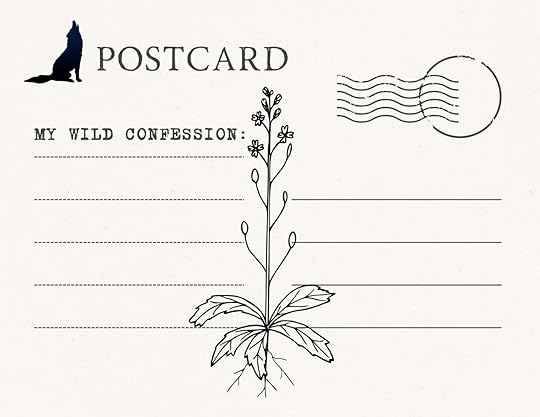
October 8, 2025
7 Strange Ideas I Have About Place
I believe that among our most important relationships is the one with place. We possess a well-developed sense of place, which I define as the experience of living in a human body in a landscape, the accumulation of memories, and the effect of surroundings on our emotional landscapes.

Relationship with place is also our most neglected relationship.

I believe that place sees you. What I mean by “see” is that it responds to your presence in the way a deer responds.

We urge restlessness in our children—if they are to be successful, they should leave the place where they were born and reared, and they should stay away permanently. Paul Gruchow wrote about this in Grass Roots: The Universe of Home. He says in the essay “What We Teach Rural Children,” “We raise our most capable rural children from the beginning to expect that as soon as possible they will leave and that if they are at all successful, they will never return. We impose upon them, in effect, a kind of homelessness.” (Recognizing, of course, that sometimes our places become uninhabitable, for all kinds of reasons.)

I believe we’re made of place, elementally, that it is stamped in our DNA. Like messenger pigeons and many other creatures, we possess a homing instinct. Home imprints on us.

Because many of us live far from birthplaces, we experience displacement, usually in the form of nostalgia or longing. When we long for home, sometimes we are longing for a place from the very far past, even a place we never knew.
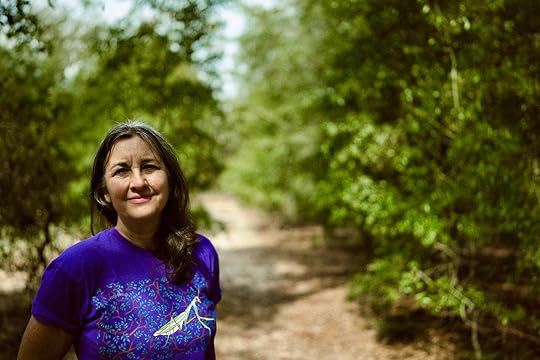
Industrial society has obliterated a lot of places. Now climate change is destroying places rapidly.
If You Too Are Obsessed by PlaceI have now written a manual for connecting with place, easy accessible and very readable. It contains 52 Explorations, one a week, for
getting grounded
improving your sense of place
feeling as if you belong
healing this place-wound
Each Exploration contains a tiny essay, a feet-on-the-ground exercise, and a writing prompt. I include lots of beautiful quotes about place and references for further study.
The book is Journey in Place: A Field Guide to Belonging.
If you would like a copy, Kickstarter is the only place to get it at the moment, and you get the best price. A paperback is $20, with $5 shipping added on. The Kickstarter is running for 20 days. It ends Oct. 25, 2025, and the books will be mailed out soon after, around the end of October.
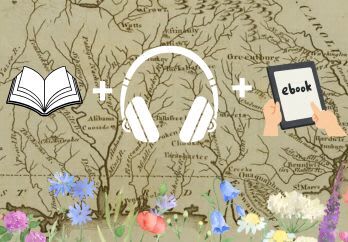 A Great Writer of Place
A Great Writer of PlacePat Conroy felt a deep connection with his place, coastal South Carolina. Recently I finished his 800-page tome, Beach Music, and I marveled at his writing on place.
Allow me to quote a couple of passages.
A squadron of brown pelicans flew overhead, their shape and wingspan so effortless in the morning air that their appearance seemed a quiet psalm in praise of flight itself. They passed over us like shadows stolen from the souls of other shadows.
Writing doesn’t get any better than that, does it?
In that summer, I would remember my friends and their souls, light and air-streamed as mallards, set loose among the vast table linen of the great salt marshes, happy among the green riches of a land so full with life that the rivers smelled like some perfect distillate made of spartina and the albumen of eggs.
One more from Beach Music by Pat Conroy.
The sunset turned the marsh gold and the western sky transformed itself into a window of rose and violet as its edges flowered and dimpled in its final burning haze. The water around us caught fire and the boat rested in a pool of cold flame.
🦬 #Radical Sustainability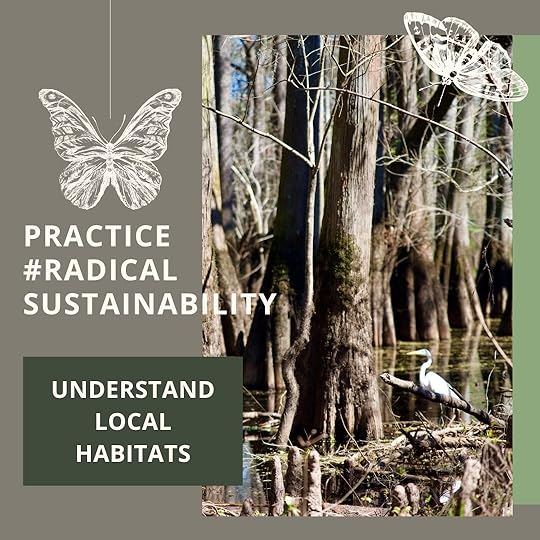 🦬 Farm Report
🦬 Farm ReportWe are rebuilding the greenhouse. It’s a tiny pit greenhouse, dug 18 inches or so into the ground and the floor lined with bricks. It was built originally out of used sliding-glass doors, but the framing slowly rotted over the years, so it needs to be redone. My husband, Raven, has ordered the materials from our local hardware store, and the lumber will be delivered this afternoon.
Hopefully we are still four to six weeks away from first frost, but the winter’s hay for the animals has arrived and stored under the old tobacco barn. For now, the cows and horses have green grass, but as soon as frost happens, green grass will be over for the year.
Luckily we planted a late round of Seminole pumpkins, and some of them are full size, albeit still green. They need to ripen before the first freeze—we can cover them with blankets for a mild frost. (Coming later this month: recipe for Pumpkin Soup.)
Oriental persimmons are ready. We plant the Fuyu variety, which can be eaten like an apple when firm or like a pudding when fully ripened. See recipe below.
One of our horses, a white Paso Fino, is frighteningly scrawny. The vet says she needs her teeth floated (filed down to fit against each other) but finding a large-animal vet who makes farm calls has been difficult.
🦬 PhenologyThe full Harvest Moon came up fat, orange, and beautiful. I was stuck teaching a Zoom workshop when it rose. I saw a light above my laptop and realized what was happening. That was a pitiful moment, to be watching the moon rise above the horizon and also above my computer screen.
I saw the first kestrel on Sept. 19, then two more arrived to power lines on the road on Oct. 1. This year, I call the October full moon Kestrel Moon.
Wingstem is blooming, again replete with pollinators.
Bluebirds had a very productive year, because their numbers are up here at the farm. I see lots of blue flashes and blue winks when I look out across the pastures and the orchard.
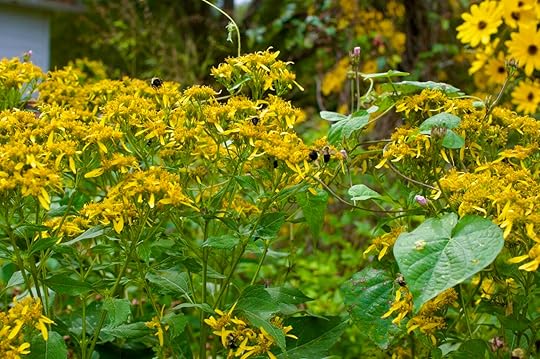 🦬 Currently
🦬 CurrentlyReading: House of Smoke, newly released memoir by John T. Edge
Listening to: Sarah Fay’s interview with Austin Kleon about Substack, here
Worrying about: Families being torn apart by ICE raids
Enjoying: 14-month-old Little Fawn’s accretion of vocabulary words (“uh-oh” when something falls is her latest)
🦬 RecipeOur friend Laura Potts-Wirht and her husband run a persimmon orchard near us called Sweet Georgia Fuyu. Their trees are now hanging with glowing orange fruits. Laura shared a recipe with me for Fuyu Fall Salad, and I wanted to pass it along to you, in case you have access to Oriental persimmons.
Fuyu Fall Salad361KB ∙ PDF fileDownloadDownload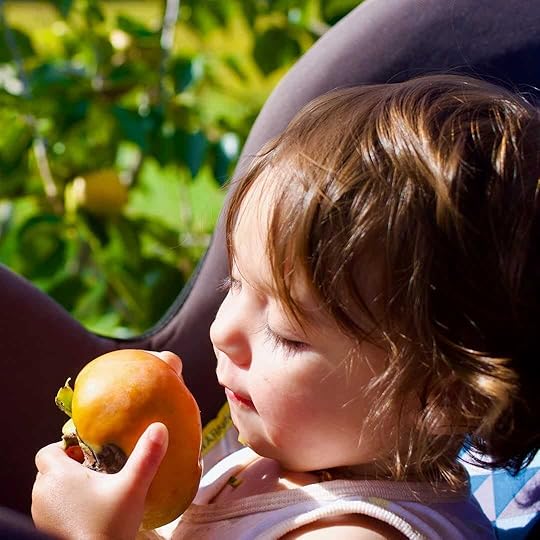 Little Fawn grappling with her first Fuyu persimmon.🦬 Don’t Forget the Kickstarter
Little Fawn grappling with her first Fuyu persimmon.🦬 Don’t Forget the KickstarterIt ends 10-25-25 at 10:25. I hope you check out what I’ve made.
🦬 As EverBe well, be wild, be kind, be of good service.
October 6, 2025
I Made a Book for You
Here on Trackless Wild during 2024, with the help of a lot of people, I produced a course called “Journey in Place.” It contained 52 Explorations, one per week, on how to grow your sense of place, feel a sense of belonging, and get more grounded.
That year, a few hundred subscribers enrolled in the course, which cost $99. I promised that at the end of it they would receive a copy of the Explorations, compiled into a book.
We finished the course Dec. 31, 2024. Now the book too is finished and this Course Edition of Journey in Place is being mailed to participants.
I Decided to Release a Trade VersionI wanted to turn the book into something for anyone interested in place, which I believe is a human obsession and also, for many of us, a soul-wound.
I decided to launch a Trade Version of the book via Kickstarter. The project went live last night.
If You Took the Course With Me in 2024Thank you so much. That was one of the best experiences I’ve had in a long, long time—an incredible group of supportive, place-loving, inclusive people thinking about the planet and our places on it. Thank you all. You contributed immensely to the ideas and direction of the book.
Some of you have received your copy of the book by now.
If you haven’t, please know that shipping is slow this summer. More books arrive to my studio today, and another shipment will be going out tomorrow. I’ve been shipping to folks in alphabetical order of first name, so if your name is Zelda or Zane, you probably don’t have your copy yet.
If you aren’t sure if you’re on the list, email me. I have a Master List of Course Participants right at my fingertips, and I can easily check to make sure you’re on the list.
If You’re Not on the List,Kickstarter is the place to go. With love and thanks and the scent of honeysuckle.
If You Want to See the New CoverI have not posted it anywhere. Kickstarter is the only place you can see it. It was quirkily, witchily, and beautifully made by Flournoy Holmes, who designed the “Eat a Peach” album cover for The Allman Brothers.
Even If You’re Set to Get a Course Edition,I invite you to visit the Kickstarter.
You can get a signed copy of the trade version, which has a new cover, new subtitle, and changes to the contents.
You can choose a signed copy for someone else. (I even gift-wrap.)
You can get the book in electronic, audio, or hardback edition.
You can peruse other offerings. To skip getting the book as a Reward and instead go straight to Add-ons, choose the Zine, which is a digital file on place, at the $1 reward level. That will allow you to access the Add-on offerings.
Add-Ons Include:Ask Me Anything Session—$11
Nature Journaling School—Journaling Place—$25
4-Hour Online Workshop on Place & Nature Writing—$55
Online Eco-poetry Summit—$77
 The Project Has Funded
The Project Has FundedI was trying to raise $2225 to pay for a human cover designer, a human photographer and videographer, a human developmental editor, and three other human editors, plus app, printing, packaging, and postal costs.
The goal has been met. Thank you, thank you.
Now the Kickstarter project carries on to allow folks who want a copy of the book a chance to get one
ASAP
signed
straight from the source
and to spread the word about how to live more sustainably and happily and relationally on the planet.
The number that matters most to me on Kickstarter is # of Supporters. At this very minute that number is at 62 (my birth year.) That means 62 copies of the book will land in the hands of real people whose lives may be touched or helped (yes!) by this work.
Please Pass the WordIf you know someone you think would enjoy or benefit from the book, please tell them about the Kickstarter.
If you’re a superfan of the project and want to tell the world about it, I’ve made a graphic to share on social media.
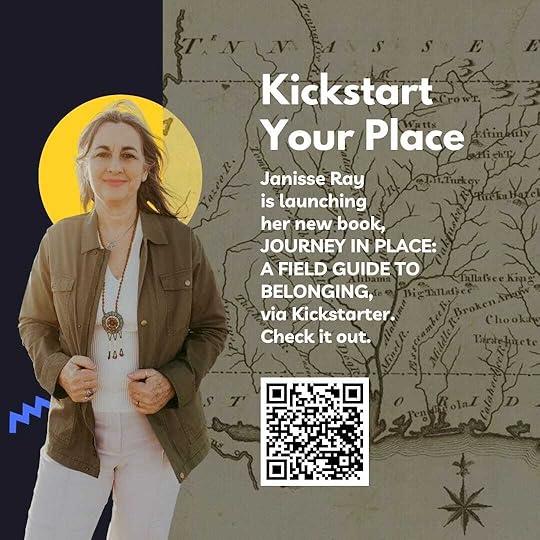 A Few More Words to Course ParticipantsWho Receives the Book
A Few More Words to Course ParticipantsWho Receives the BookThe book is a bonus that was made available to folks who signed up for the course as paying subscribers at the
$99/year level, through Substack, by check, or by another payment method
$9/month level for at least 11 months, through Substack
founding level
Thank you all.
The Chance for My Error Is GreatMy record-keeping was not as stringent as it needed to be. I made lists of names, but I’m finding out that I missed some things. Sometimes people have multiple email addresses and used one on Substack and another for communicating with me. Sometimes people signed up under a pseudonym, and I don’t realize who they are. Sometimes a course registration came through that I forgot to record.
Therefore, if you haven’t received a book or heard from me by Nov. 15, please don’t hesitate to be in touch. I have ordered extra copies of the book and they will be ready, waiting to be posted.
Another Complication—If You PreorderedI put a Preorder Page on my website months ago for this book. I received 45 orders for the book via my website. I sent an email this morning to each of you, essentially saying, “Thank you. Your book is slated to be mailed. As soon as the Kickstarter ends, your book will be sent to the address you provided on your website order.”
I want to invite anyone who preordered through my website to go to the Kickstarter and look at the cover, look at the reward tiers, and look at the other offerings.
And an InvitationIf you are interested in running a Kickstarter as a way to launch a new product into the world, I would be delighted to teach a “How To Do It” workshop at no charge. Let me know you’re interested and I’ll start a secret list.
See You WednesdayI’ll be back in touch later this week with the regular Trackless Wild doings. Until then, be well, be wild, be of good service. And be of good cheer.
 Little Fawn and Janisse, loving this place we find ourselves, loving each other, and loving you.
Little Fawn and Janisse, loving this place we find ourselves, loving each other, and loving you.
October 1, 2025
How to Have a Fall Picnic
Determine to take a meal outside.
Decide where you’re going. And when. How about a small grove where filtered light dapples the understory? Or a lake edge at twilight? A wildflower meadow at noon? Your backyard?
With whom shall you picnic? Invite them, right now. Check the forecast to make sure the weather will be pleasant.
If you have a proper picnic basket, get it out. If you don’t, retrieve a tote or a cardboard box.
Add the non-food items you’ll need to eat a nice meal outdoors. The less weight you carry, the better. Skip plates and forks, if possible—you can eat with your fingers. I’ve started a tiny list of items below. Start packing the basket or stacking things nearby.
Go find your favorite book of poems. Add it to the basket. Or copy out a poem to leave under a rock—it will biodegrade.
Get food together. Probably you have food already in your kitchen, but if your cupboards are bare, plan your picnic after a trip to the farmers market or grocery. Food suggestions are below. What foods would make you happiest? What would delight your guest(s)?
If you have time, bake a cake. Take the whole cake.
Now pack your basket. Start with a bottle of wine if you can drink, along with a corkscrew and some cups. If your wine comes with a screw top, skip the corkscrew. If you’re not drinking, bring a bottle of sparkling water. Alternately, if you’ve been furloughed and can’t spend money, make a thermos of coffee or tea. Include a water bottle?
Tuck packages of food into the basket. You don’t need much, just enough to feel happy. Tip: don’t bring bananas. They get mushy. Also, if you’re bringing a food that’s wet (like potato salad) or could get squished (like grapes), pack it in a Mason jar. They are less likely to leak.
Don’t forget chocolate.
If you have a baby, remember the stroller.
When you arrive to your spot, consider spraying the reverse side of your blanket with bug repellent. Having had Lyme disease and not wanting to encounter ticks, I often spray the underside edges of my blanket. This is probably not necessary in Central Park.
Sit down and take a deep breath. Smell autumn in the air. Take a minute to describe that fragrance. What are its tones and undertones?
Feel the ground beneath you. Feel the sun and breeze on your face.
Look directly at the person you’re with and give them a big smile. If you’re alone, wrap your arms around yourself and give yourself a big squeeze. Think: “I wish Janisse could see me now.”
Say aloud, “It’s good to be alive, isn’t it?”
Get up and walk around collecting autumn foliage and a few wildflower sprays, if there are plenty. Make an arrangement (without a vase) in the center of your blanket.
Uncork the wine and pour adult drinkers a cup.
Ask, “When’s the last time we had a picnic?” Enjoy the conversation, if the question results in some.
Unpack the food. Partake. Leave your phone, if you have brought it, in the basket. Ask, “What the thing you’re enjoying most about your life right now?”
After you eat, steal a little nap.
Then say, “Want a hear a poem?” Read a favorite poem aloud. Let it sink in. Look again at your guest(s), directly in the eyes, and smile.
Say, “That was so nice. Thank you for coming with me.” Or when they say thank you, you say, “You’re so welcome. I’m so glad to be alive with you at this moment on Earth.”
Make a mandala with the leaves and natural objects you collected. Pack up, look around one last time, take a deep breath, say goodbye, and head home.
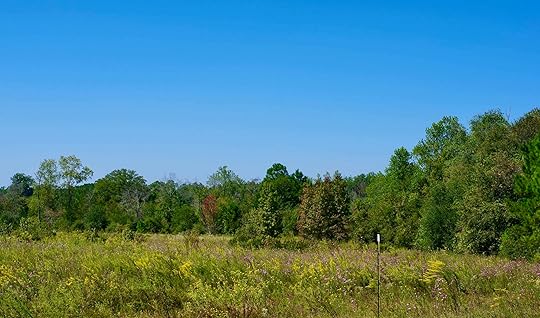 Tiny List for a Picnic
Tiny List for a PicnicA large sheet to sit on (maybe one of those beautiful block-printed pieces of Indian muslin)
Bug spray
A cloth napkin for every person
Wet napkin in a plastic bag for hands
Candle & a packet of matches
Recommended by Kathy Amos—Music! Carry your phone with Spotify or other app. Play gentle, soothing music. It may be classical or folk music (Judy Collins comes to mind), perhaps piano or acoustic guitar music speaks to you. Play it at a low volume while you eat. When you have finished eating, turn off all sound. Let the air be filled with silence except the sounds of nature.
The MealClassic: Fresh bread, a salami, cheeses, crackers, raw veggies (celery, carrots, broccoli), fruit (grapes, strawberries, figs), nuts, and a bottle of wine or sparkling water.
Southern Touch: Pimento cheese sandwiches, boiled peanuts, watermelon wedges, fried chicken, potato salad.
Mediterranean: hummus, tabouli, pita chips, tzatziki, olives, grapes, baklava.
Vegan or Vegetarian: bean salad, chips, salsa, seaweed rice chips.
Poem Recommendations“i carry your heart with me” by e. e. cummings
“Song for Autumn” by Mary Oliver
“The Peace of Wild Things” by Wendell Berry
“When Death Comes” by Mary Oliver
“Gate C22” by Ellen Bass
“This Beginning May Have Always Meant This End” by Camille Dungy
“Traveling Together” by W. S. Merwin
“Difference” by Leonard Peltier
“Lying in a Hammock at William Duffy’s Farm in Pine Island, Minnesota” by James Wright
“The Background Beyond the Background” by Pattiann Rogers
“The Here of Here” by Ann Fisher-Wirth
“The Way It Is” by William Stafford
“All Landscape Is Abstract, and Tends to Repeat Itself” by Charles Wright—recommended by Monica Miller
What Do You Want To Add To Our Lists?Tell me and I will add it.
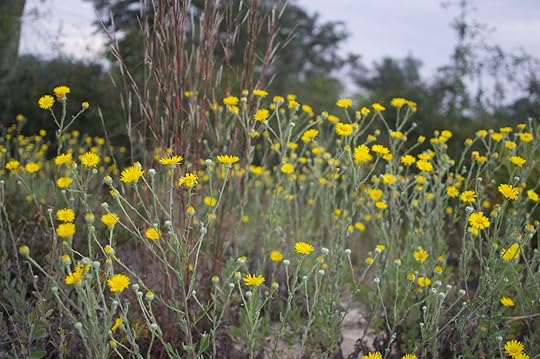 In Personal & Other News🦬 I Hit the Kickstarter Launch Button on 10-5-2025, Which Is This Sunday
In Personal & Other News🦬 I Hit the Kickstarter Launch Button on 10-5-2025, Which Is This SundayI have a new book coming out this fall: Journey in Place: A Field Guide to Belonging, a hands-on guide to getting to know and falling in love with your place. It will be released via Kickstarter. The launch is Oct. 5 and will run for 20 days, until October 25.
As of today, 255 people are following the Kickstarter project for Journey in Place.
The book will be available in four editions—hardback, paperback, audiobook, and electronic. In addition to books, a few limited-edition items will be available as add-ons. Those include Journaling Place, a series of Nature Journaling School, for $25; a 4-hour Place and Nature Writing Workshop; a 5-hour Eco-poetry Summit with guest teachers, to be announced; 2 place-based gourmet gift boxes; and an online Ask Me Anything.
If you are interested in supporting this deeply personal and meaningful project, please check out the pre-launch page and click “Notify me upon launch.” You’ll get a notice from Kickstarter the minute I hit the “Launch now” button.
This project originated on this Substack in 2024 with a correspondence course for paying subscribers called “Journey in Place.” Fifty-two explorations, one per week, became backbone chapters.
I have not shown the new cover to anyone, and the Kickstarter Pre-Launch page will be the first place you will see it. It’s a really witchy and cool cover by the man who designed the “Eat a Peach” album cover for The Allman Brothers.
Thanks to the team who helped me bring this book to life, especially all the amazing course participants. I thank developmental editor Hilary Vidalakis and line editors M.K. Creel, Dallas Anne Duncan, and Sue Kusch. Thanks to Silas Ray-Burns for photography and videography. Five writers contributed guest posts that appear in this book, and I thank Stephanie Cornais, Sheila Knell, Sue Kusch, Jeanne Malmgren, and Catherine Young.
🦬 Spend This Saturday With Me in Atlanta, Writing the Urban Sacred
I’m teaching a day-long workshop in Atlanta, Georgia on October 4—”Thresholds and Presence: Writing the Urban Sacred.” Cost is $199, which includes coffee, snacks, lunch, handouts, a copy of Craft and Current, plus a beautiful day.
Some people really like small groups, and I predict this one will be small. Thirteen people have signed up so far. The weather will be glorious and I am very excited to be doing this. Join me if you’re able.
The baby will be with me, and her travel-nanny will be along.
Registration closes Thursday night.
🦬 Update on the Course Edition of the Journey in Place BookFifty more copies of the Course Edition of Journey in Place, the book, went out this week. I have about 150 books left to mail.
Copies of this edition are being mailed to folks who registered for the course by becoming paid subscribers of Trackless Wild during 2024 at the level of
$99/year
$9/month for at least 11 months
Your copy of the book plus shipping and handling was included in the cost of tuition.
(I have since lowered the subscription rate for Trackless Wild to $33.)
If you are wondering about the status of your copy of the Course Edition, don’t feel shy about emailing me. I keep a Master List and checking your status on it is a simple matter.
🦬 Last Call for DNA StoriesMy co-editor Hilary Vidalakis is nearing the end of our first pass through the anthology of DNA stories we are producing.
If you have a story about a DNA surprise and you have not sent it, please forward it to me at your earliest convenience. I can be reached at wildfire1491@yahoo.com.
If you have submitted a story for that volume, you should be hearing from us before long.
Hilary is saving me on this book. I could not do it without her. She’s an incredible editor with the lightest, most loving touch, and she is working her magic on these essays. We’ll have more information and pre-order links up soon.
Stay tuned.
🦬 If You Wish To Not Renew Your Subscription To My NewsletterHeads up! If you wish to not renew your yearly subscription to Trackless Wild, you will need to turn off auto-renew. One of Substack’s policies—one with which I don’t agree—is to continue to charge yearly rates. That also means that if you subscribed in 2024 when the rate was $99, you will continue to be charged at that level. You may need to cancel your subscription and then re-subscribe, if you wish, at the $33 level.
Whatever you decide to do, I am deeply grateful for your presence, your eyes, your heart, your hands, your care. I know that some of you budget to support writers and the arts, and if I am one of your chosen recipients, many glorious and heart-shaped and chocolatey thanks to you.
🦬 Until Next WeekBe well, be wild, be of good service. Let me know how your picnic goes.
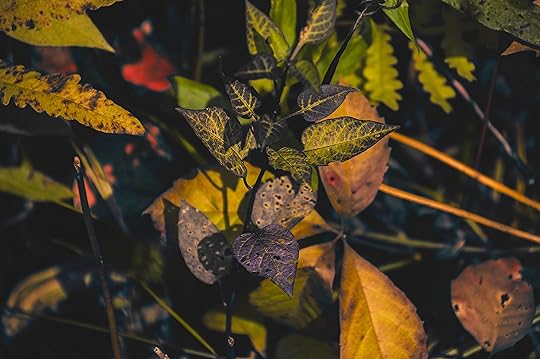 Photo by Shann Hartford, Quantum Flow Photography, with thanks
Photo by Shann Hartford, Quantum Flow Photography, with thanks

